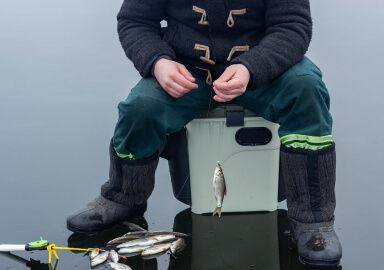Bowfin
Bowfin are a medium sized, predatory freshwater fish of the south eastern areas of North America.
View 3 listings
3
listings
–
price starting from
2
countries
–
to the nearest trip
Where and When?
The natural distribution of bowfin is eastern North America, south to southern Florida and west - almost reaching Mexico. Northwards they enter Canada in Ontario and Quebec and are present in the Great Lakes. They favour slow moving or stagnant waters and backwaters and are often found hiding in or near vegetation or structure. They tend to be “demersal”, usually staying close to the bottom of the waterbody and often resting on it. Bowfin have been introduced to many rivers and lakes in North America, but mostly exist within their natural distribution.
Bowfin often “lurk” in vegetation or other cover, but can be found in shallow or deep water. While they prefer murky waters they are also found, usually in cover, in clear waters. Bowfin may be caught throughout the year, but feed more aggressively in warmer weather and early spring can be amongst their most active periods. Bowfin are usually solitary fish except in the spawning season and do not undergo any obvious migrations.
About Bowfin
Bowfin (Amia calva) were given the name due to the long, undulating dorsal fin that runs down the back of most of the body. While initially considered a “nuisance” fish of little value, bowfin have made a “recovery” in recent years and are now seen as an important part of ecosystems. Their flesh, which was seen as bland and soft, if cooked properly can be tasty and valuable.
Bowfin are of ancient stock and are elongate, cylindrical fish with a large head and a substantial mouth armed with strong teeth at the front. They are black or olive brown, often mottled, on top, and creamy or white below. They are typically around 50 cm. (20 in.), but can attain 109 cm., with a mass of 9.75 kg. (21.5 lbs.) within their lifespan, which can be as long as 33 years.
The bowfin are ambush predators targeting fish and invertebrates. Females are generally larger than males. In early summer males create nests in vegetation which the females enter to lay their eggs. The males then fertilise them in the nests and young stay in or near the nests for 4 - 6 weeks. Like gar, bowfin often gulp in air, especially in low oxygen conditions.
How to Catch?
The best way to catch bowfin depends on time of year, kind of locality, and preferences of the angler. In many areas bank fishing is best, and easiest, while in others a kayak or small boat can greatly increase success rates. Fly fishing is very difficult as, amongst other things, the bowfin mouth is very bony and setting a hook with a fly rod is not easy. Even the use of hard, strong, sharp hooks can have issues as the fish often wriggles madly and shakes its head and hooks are easily dislodged. The aim is to set the hook in a soft area of the mouth, but this is not easy. Spinning is probably more efficient than fly-fishing, but faces the same challenges.
The most popular way to catch bowfin is light to medium spinning equipment with live or dead natural baits. Popular baits include minnows, night crawlers, frogs and salamanders. Sight fishing, when possible, can be successful and fun, but most bowfin are probably caught through “normal” bait fishing. Some people still regard bowfin as a less than exciting fish to catch, but the reality is that it is a difficult fish to hook and land. With a little investigation, preparation and being open to learning, it is possible to have great fun targeting this species successfully and, occasionally, catching an excellent specimen under difficult circumstances.




